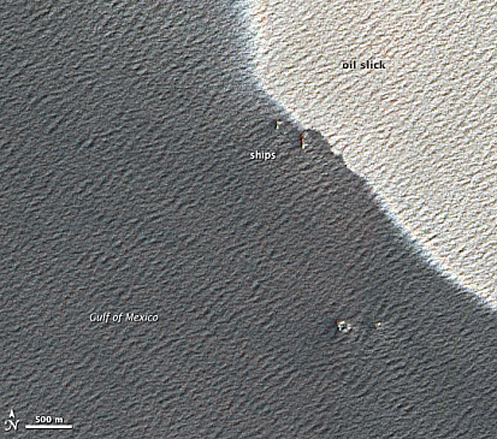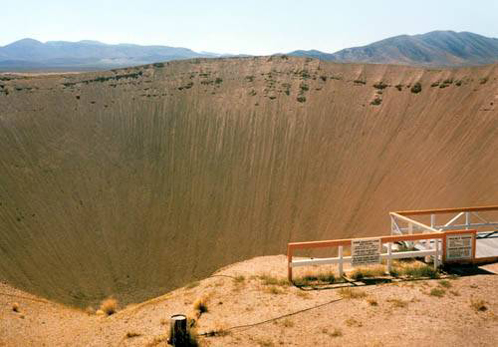|

by Vladimir Lagowski
3 May 2010
from
ProjectAvalon Website
Original source in Russian
|
In the old USSR, even bigger
gushers were stopped using 'peaceful ' atom bombs. |

Just one nuclear bomb
could save the U.S.
from ecological catastrophe
It's possible that unsuccessful attempts
to stop the
uncontrolled flow of oil from the
bottom of the Gulf of Mexico using underwater robots will compel
engineers to take extreme measures. Namely - to explode a nuclear
bomb near the damaged well.
It sounds dreadful and surreal, like a bad joke. But in fact there
have been several incidents of oil catastrophes that were handled
this way. This happened five times in the former USSR, when nothing
else would work. Just like what's happening now in the Gulf of
Mexico, where oil is pouring out from three places.
The first time an underground nuclear explosion was used to
extinguish an uncontrollable burning gas well was in Urt-Bulak (80
km from
Bukhara) on September 30, 1966. The
yield was 30 kilotons. For comparison, the Hiroshima bomb was about
20 kilotons. But that was at a height of 600 meters; near Bukhara,
the bomb was detonated one and a half kilometers underground.
The theory is simple: an underground explosion moves the rock to
'squeeze' the well closed.
These powerful nuclear "plugs" - sometimes as powerful as 3
Hiroshima bombs - were used up until 1979. And there was only one
failure. They failed to block the gas blowout in the Kharkov region
in 1972. The explosion there reached the surface, releasing a
mushroom cloud. This inexplicably occurred although the charge was
very small (only 4 kilotons), and was detonated at a depth of more
than two kilometers.
So the probability of failure in the Gulf of Mexico is maybe 20
percent. The Americans might take the risk. The probability of dying
during the flight to the Moon was higher.
Of course, we used this 'peaceful' nuclear explosion on land, while
the Americans would have to do so at sea - underwater - where the
ocean depth reaches 1500 meters.
But there is no difference in principle: you would still need to
drill another well some distance from the one causing the problem -
and place the bomb in it, just as in the movie "Armageddon" with
Bruce Willis playing the driller. The calculations must be done
correctly.
But there would be hope: the U.S. has
many clever scientists and powerful computers. And Russia could
help.
Some of our peaceful nuclear demolition
experts are still alive.

An oil slick in the
Gulf of Mexico: a view from space

The edge of the spill (for comparison, the tiny dots are big boats)
Nuclear
weapons for a peaceful purpose
The USSR used underground nuclear explosions for peaceful purposes
during the period from 1966 to 1988. In total, the former Soviet
Union detonated more than a hundred atomic bombs. According to some
sources, 124 - and to other sources, 169. And that's not counting
the military testing of nuclear weapons.
According to official statements, the explosions were carried out in
the interests of the national economy.
The majority were for seismic survey of
deposits and for subsurface exploration. Explosions created
underground reservoirs for gas storage and chemical waste. They were
used to dig canals, build dams, and increase oil recovery. This was
never regarded as anything harmful... although the hundreds of
atomic bombs that were used would probably be more than in a nuclear
war.
During this time, the USA was also playing with
peaceful use of nuclear weapons.
They actually began earlier, in 1962.
But in the end they produced much fewer
explosions in the interests of their capitalist economy... although
their plans were grandiose.

The Sedan crater in
Nevada:
a funnel with a depth
of 98 meters and a diameter of 390m. from the world's first
industrial explosion,
carried out in the
U.S. on 6 July, 1962.
The explosion with a
104 kt yield at a depth of 194m. immediately moved 12 million tons
of earth.
|




